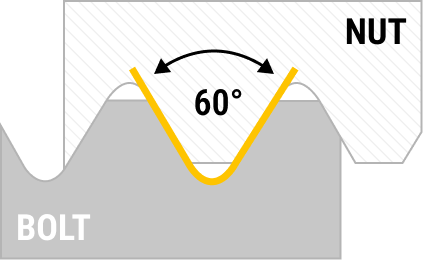
C.E.I. thread
The C.E.I. thread is a historical British bicycle thread. The abbreviation C.E.I. stands for Cycle Engineering Institute, the organization that first defined the C.E.I. thread. The C.E.I. thread has since been replaced by BSC or BSCy thread, by incorporating the C.E.I. thread with slightly modified dimensions into the British Standards (BS) collection. The C.E.I. thread and the BSC differ slightly, but the deviations are minimal. For this reason, C.E.I. and BSC threads are often considered interchangeable and used synonymously. Nevertheless, when working with the British bicycle thread, this difference should be taken into account to avoid problems.
The C.E.I. thread is an imperial thread. Accordingly, the dimensions of the C.E.I. thread are given in inches, and the pitch in threads per inch. The flank angle is 60°, which distinguishes the C.E.I. thread from most other British thread standards, which typically have a flank angle of 55°. The 60° flank angle was also retained in the BSC thread.
The individual thread sizes are distinguished by the external diameter in inches. This value can be indicated either as a fraction (e.g., 3/8") or in decimal notation (e.g., 0.125 inches). The latter variant is more commonly used with the C.E.I. thread.
The thread table for the C.E.I. thread, with 21 entries, covers more thread sizes than the newer BSC thread. Sizes at the edges of the scale range were mainly dropped during the transition. Furthermore, it is noticeable that the number of threads per inch often remains constant across several thread sizes.
In the thread table below for the C.E.I. thread, you will find, in addition to the inch measurements, also the external diameter in mm, as well as values for the appropriate core hole diameter required for working with the C.E.I. thread. The pitch has also been additionally converted into a mm value.
